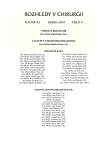Acute periproctal abscesses
Authors:
P. Šlauf; F. Antoš; J. Marx
Authors‘ workplace:
Chirurgická klinika l. LF UK, nemocnice Na Bulovce, Praha, přednosta: Doc. MUDr. J. Fanta, DrSc.
Published in:
Rozhl. Chir., 2014, roč. 93, č. 4, s. 226-231.
Category:
Various Specialization
Práce je určena k postgraduálnímu vzdělávání lékařů.
Overview
Periproctal inflammations related to the anus are characterized by the rapid spread of the infection to the surrounding tissue, which is determined by the anatomical characteristics and infectious agents. Inflammation, which starts as a phlegmon, quickly forms boundaries and an abscess develops in most cases. Up to 80–90% of anorectal abscesses develop according to the crypto-glandular theory on the basis of infection of the anal glands, spilling into the Morgagni crypts in the anal canal. Up to two-thirds of such abscesses are associated with the emergence of anorectal fistulas. Anorectal abscesses can be divided into marginal and subcutaneous perianal abscesses, submucosal, intersphincteric, ischiorectal and supralevator abscesses. Their diagnosis is based on thorough physical examination, sometimes also with the help of imaging methods such as computed tomography, magnetic resonance imaging and endoanal ultrasound. What is decisive for the successful treatment of anorectal abscessess is their early and adequate surgical drainage. Adjuvant antibiotic therapy is necessary only when the overall signs of sepsis are present and for patients with a comorbidity such as diabetes, valvular heart disease, or immunodeficiency.
Key words:
anorectal abscesses and fistulas – crypto-glandular theory – surgical treatment
Sources
1. Novák J. Základy proktologie. Praha, Avicenum 1985 : 96–131.
2. Schouten WR. Absces, Fistula in: Herold A, Lehur PA, Matzel KE, OęConnel PR. Coloproctology, Berlin, Heidelberg, Springer Verlag 2008 : 53–61.
3. Horák L, Skřička T, Šlauf P, Örhalmi J, at al. Praktická proktologie. Praha, Grada Publishing 2013 : 186–198.
4. Chandwani D, Shih R, Cochrane D. Bedside emergency ultrasonography in the evaluation of a perirectal abscess. Am J Emerg Med. 2004;22 : 315.
5. Tio TL, Mulder CJ, Wijers OB, et al. Endosonography of peri-anal and peri-colorectal fistula and/or abscess in Crohnęs disease. Gastrointest Endosc 1990;36 : 331–6.
6. Cirocco WC, Reilly JC. Challenging the predictive accuracy of Goodsallęs rule for anal fistulas. Dis Colon Rectum 1992;35 : 537–542.
7. Corman ML. Colon and Rectal Surgery. 4th ed. Philadelphia, Pa: Lippincott-Raven 1998 : 224–71.
8. Dozois RR, Nichols JR. Surgery of the Colon and Rectum. New York, NY: Churchill Livingstone 1997 : 255-84.
9. Lunniss PJ, Phillips RKS. Anal Fistula: Surgical Evaluation and Management. London, England, Chapman & Hall 1996 : 1–183.
Labels
Surgery Orthopaedics Trauma surgeryArticle was published in
Perspectives in Surgery

2014 Issue 4
- Metamizole vs. Tramadol in Postoperative Analgesia
- Metamizole at a Glance and in Practice – Effective Non-Opioid Analgesic for All Ages
- Spasmolytic Effect of Metamizole
Most read in this issue
- Acute periproctal abscesses
- Surgical rectocele repair – many techniques, few unambiguous conclusions
- Complications of hemorrhoids
- Pulmonary metastases – 12-year experience with surgical therapy
